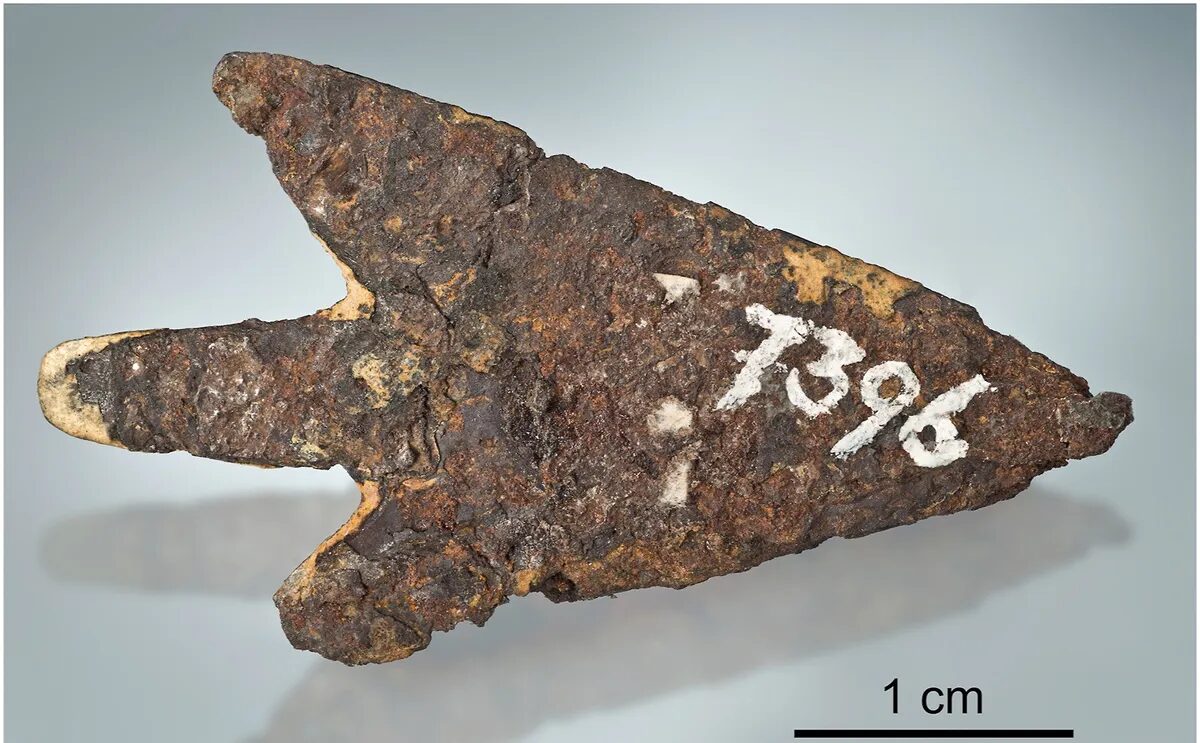
Reporting their find in a new study, the authors explain how they searched through archaeological collections around Lake Biel, where they came across the projectile tip. Weighing 2.9 grams (0.1 ounces) and measuring 39.3 millimeters (1.5 inches) in length, the arrowhead was traced to a Bronze Age dwelling called Mörigen, which existed between 900 and 800 BCE.
The meteoritic nature of the iron was confirmed by the presence of aluminum-26 isotopes, which are only present in objects originating beyond Earth's atmosphere. A particular alloy of iron and nickel that occurs only in meteorites was also detected in the arrowhead.
Residues left behind by an ancient adhesive - most likely birch tar - were found on the object, indicating that it was probably attached to a shaft at one time. It's unclear, though, whether the weapon was used for hunting or in combat.
Given that Mörigen is located less than 8 kilometers (5 miles) from the site of the Twannberg meteorite, this space rock would seem the obvious candidate as the source of the iron used in the arrowhead. However, after analyzing the relic, the study authors found that the concentrations of nickel and germanium didn't match those of the Twannberg meteorite.
Upon closer inspection, they determined that the weapon was forged from a type of space rock called an IAB meteorite, while the mineral composition suggests that the celestial object had a pre-atmospheric mass of at least two tons.
"Among large IAB meteorites from Europe, three have a chemical composition consistent with the Mörigen arrowhead: Bohumilitz (Czech Republic), Retuerte de Bullaque (Spain) and Kaalijarv (Estonia)," write the study authors. Of these, only the latter impacted during the Bronze Age, making this the most likely candidate for the source of the arrowhead.
Estimated to have crash landed between 1870 and 1440 BCE, the Kaalijarv meteorite would have been known to local populations throughout this historical period, and fragments of the rock may have been distributed amongst other communities. Given that Mörigen is roughly 1,600 kilometers (1,000 miles) from Kaalijarv, the researchers say their find "demonstrates that iron meteorites were used and traded by 800 BCE (or earlier) in Central Europe."
The study is published in The Journal of Archaeological Science.



Comment: And this isn't the first item that has been found to have been fashioned from a meteorite; and some researchers speculate this spate of raining meteors of the period not only contributed to the downfall of civilisations, but also may have been a catalyst for metallurgy: